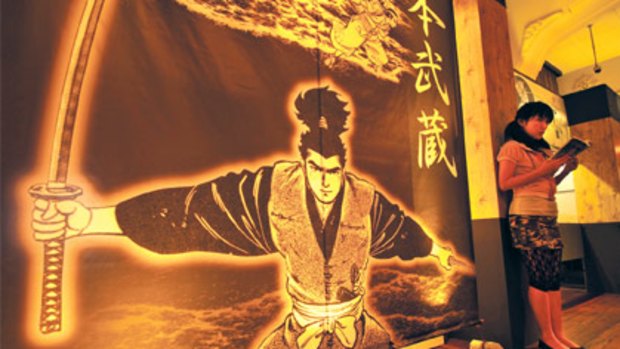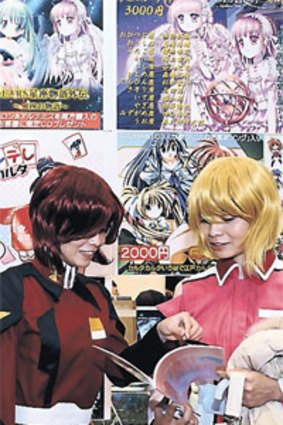By Steve McKenna

Kyoto’s International Manga Museum has a collection of more than 300,000 comics.Credit: AFP
AT FIRST glance, the geeky schoolboys, the trendy twenty-something girl with Gucci handbag and sunglasses, the middle-aged woman in a pretty, flowery dress and the two white-haired old men appear to have little in common. But, as they sit alongside one another, in silence, their eyes glued to the pages in front of them, they encapsulate the egalitarian nature of Japan's manga fetish.
Literally translated, manga means "whimsical pictures". To you and me, it means comics.
The key to these comics, as I discover in Kyoto's International Manga Museum, is that they're far more sophisticated than Tom and Jerry or Donald Duck. In a city bursting with ancient temples, shrines and palaces, the museum offers a fascinating insight into a modern Japanese phenomenon - far too popular to be called a mere subculture.
Today, to a backdrop of peaceful piano music, males and females of all ages are sifting through the museum's 300,000-plus collection of comics, spread across two floors of a former school building.
The comics - typified by colourful covers peppered with wacky-haired, doe-eyed characters against psychedelic backdrops - rub shoulders with exhibits and explanations that sketch manga's origins and inexorable rise.
Influenced by the US occupation of the country from 1945 to 1952, when Disney and Western art seeped into Japanese culture, manga exploded thanks to pioneers such as Tezuka Osamu. Regarded as "the father of manga", he created icons such as Astro Boy and Black Jack, while his character of Kimba the White Lion is believed to have inspired Disney's The Lion King.

Comic relief ... girls check out a manga purchase.Credit: Getty Images
There's more to manga than superheroes and talking animals crushing the forces of evil, however. Manga is for everyone, with comics about history, politics, social satire, science-fiction, environmentalism, philosophy, cookery and even pornography (though there don't seem to be examples of it in the museum, even on the top shelves).
Manga supporters claim the comics not only tell entertaining stories, they also convey knowledge and make complex information easily accessible.
Along with its cartoon cousin, anime (dubbed "moving manga"), manga now a key Japanese export, filling bookshelves and DVD shops across Asia and Europe and injecting billions of yen into the country's faltering economy.
Manga's popularity at home shows no signs of diminishing, either. If anything, it's making ever more inroads into the cultural landscape. After leaving the museum, I see manga everywhere - and it goes further than people leafing through comics in public. Although cinemas show their share of Hollywood blockbusters and Asian movies, anime films flood the listings; internet cafes double as manga libraries; teenagers dress up like their favourite manga characters; and images of cartoon figures are splashed on clothes, bags, gadgets, video games and pinball machines.
The writer was a guest of the Hyatt Regency Kyoto.
Trip notes
Getting there Japan Airlines (jal.com) flies from Sydney to Osaka, priced from $1600 return. Trains leave Osaka for Kyoto regularly. The fastest way (13 minutes) is on the shinkansen (bullet train).
Staying there The Hyatt Regency Kyoto is set in the picturesque Southern Higashiyama sightseeing district. Doubles priced from ¥22,000 ($280) a night. kyoto.regency.hyatt.com.
See + do The manga museum is open daily, 10-6pm; entry is ¥500/¥100.
Take the kids — definitely. The museum has a children's library and there are often workshops where kids can practise manga-style drawings. kyotomm.jp.
Further information kyoto.travel; japantravel.com.au.
Sign up for the Traveller Deals newsletter
Get exclusive travel deals delivered straight to your inbox. Sign up now.